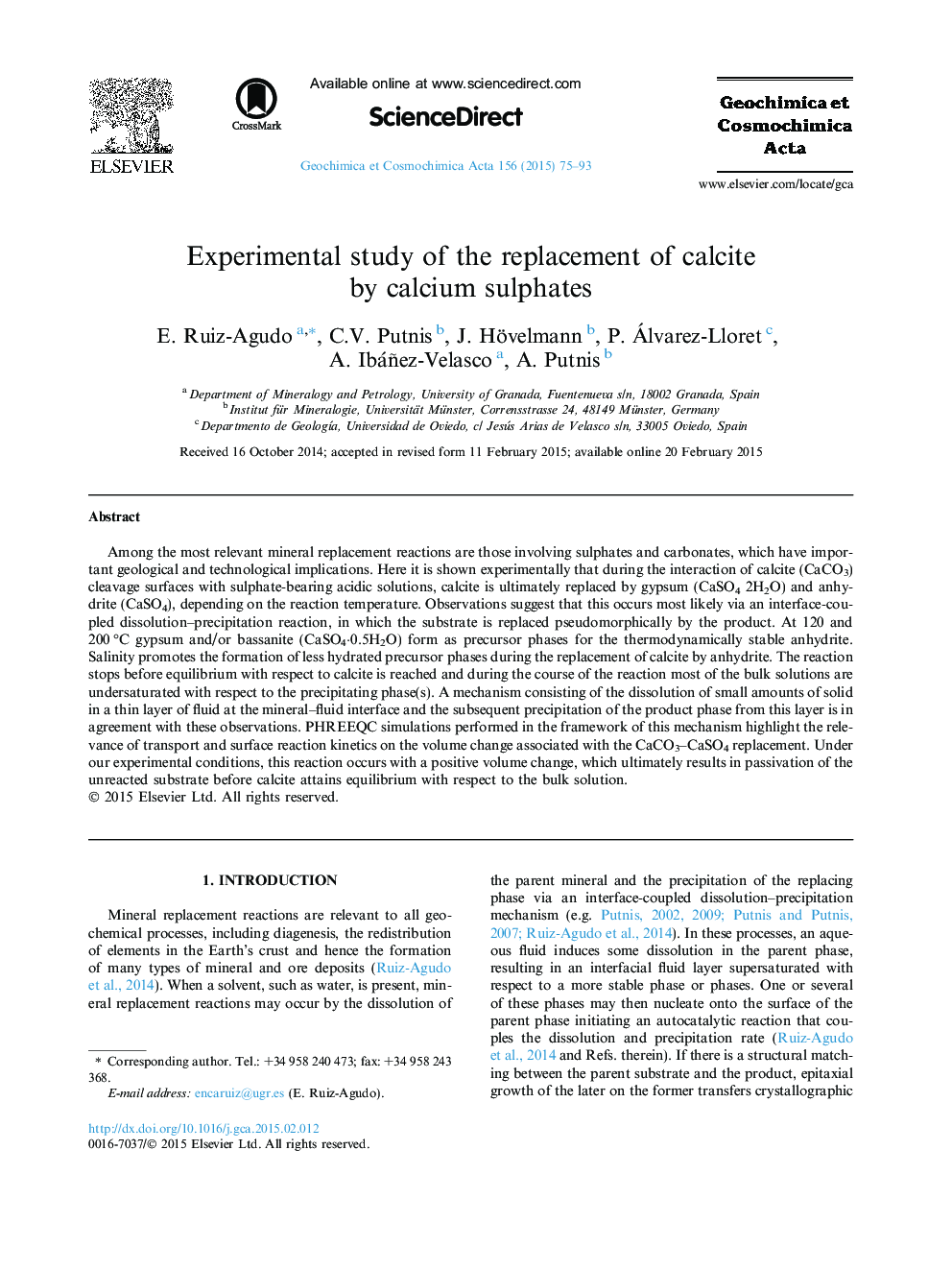| Article ID | Journal | Published Year | Pages | File Type |
|---|---|---|---|---|
| 4701941 | Geochimica et Cosmochimica Acta | 2015 | 19 Pages |
Among the most relevant mineral replacement reactions are those involving sulphates and carbonates, which have important geological and technological implications. Here it is shown experimentally that during the interaction of calcite (CaCO3) cleavage surfaces with sulphate-bearing acidic solutions, calcite is ultimately replaced by gypsum (CaSO4 2H2O) and anhydrite (CaSO4), depending on the reaction temperature. Observations suggest that this occurs most likely via an interface-coupled dissolution–precipitation reaction, in which the substrate is replaced pseudomorphically by the product. At 120 and 200 °C gypsum and/or bassanite (CaSO4·0.5H2O) form as precursor phases for the thermodynamically stable anhydrite. Salinity promotes the formation of less hydrated precursor phases during the replacement of calcite by anhydrite. The reaction stops before equilibrium with respect to calcite is reached and during the course of the reaction most of the bulk solutions are undersaturated with respect to the precipitating phase(s). A mechanism consisting of the dissolution of small amounts of solid in a thin layer of fluid at the mineral–fluid interface and the subsequent precipitation of the product phase from this layer is in agreement with these observations. PHREEQC simulations performed in the framework of this mechanism highlight the relevance of transport and surface reaction kinetics on the volume change associated with the CaCO3–CaSO4 replacement. Under our experimental conditions, this reaction occurs with a positive volume change, which ultimately results in passivation of the unreacted substrate before calcite attains equilibrium with respect to the bulk solution.
